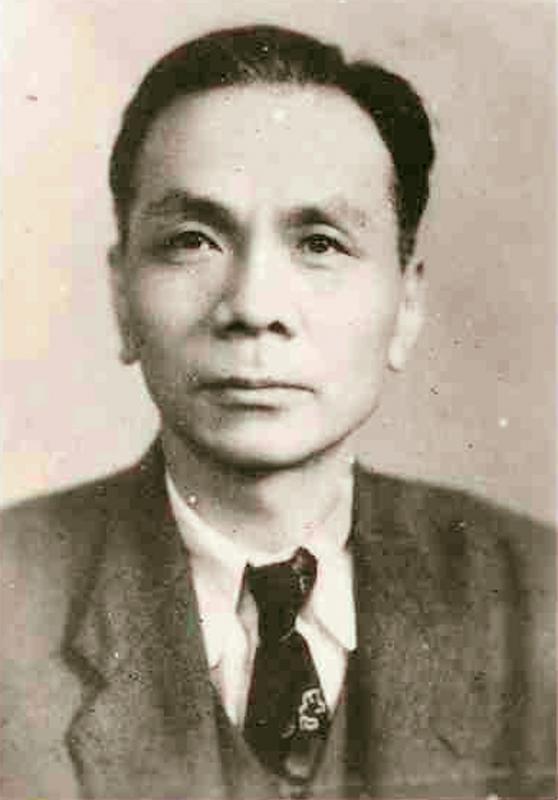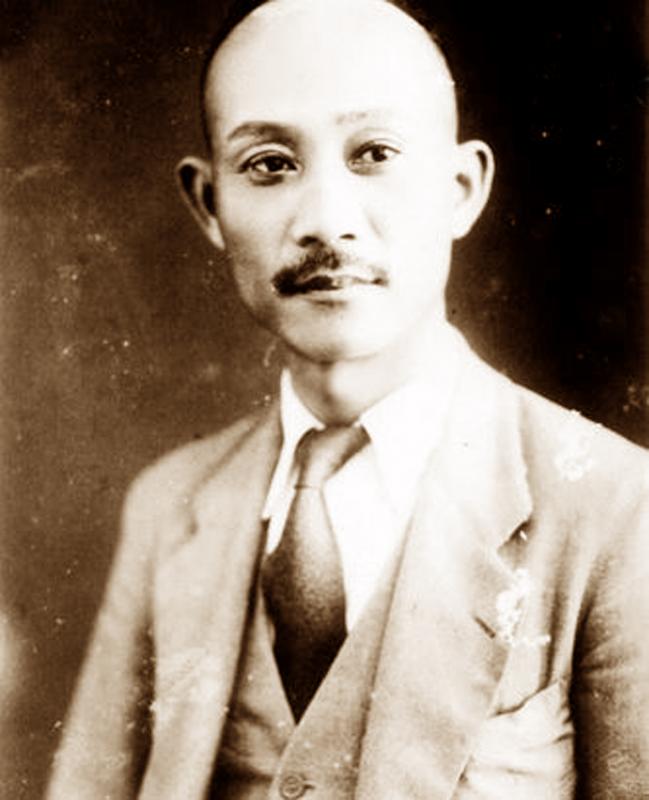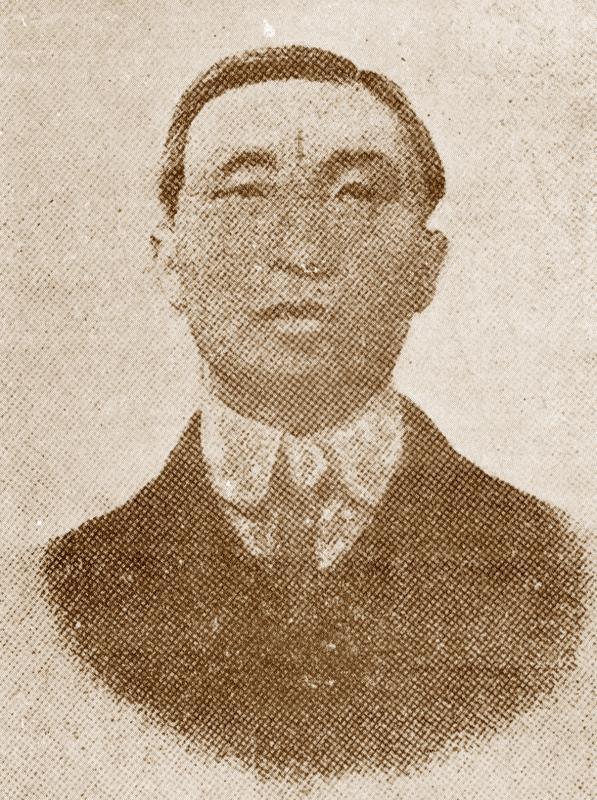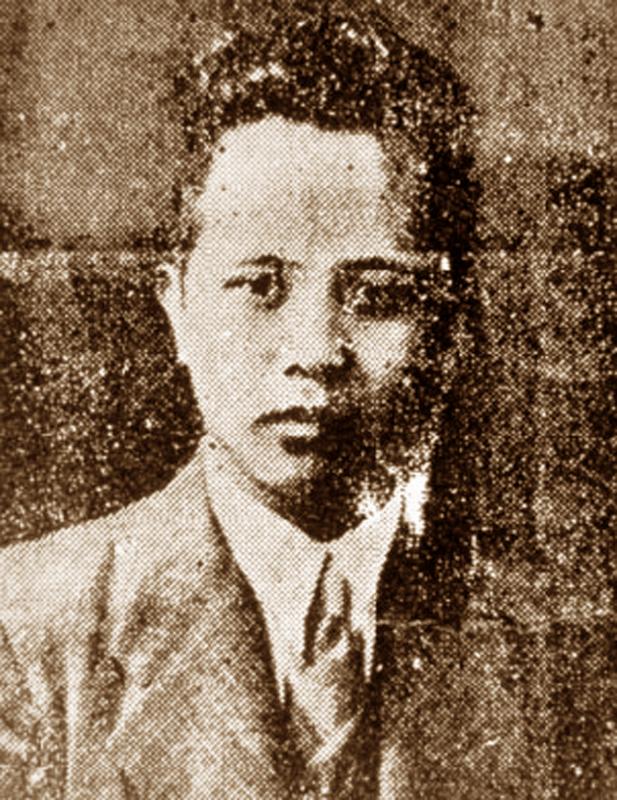Five armed policemen barged into Sanmin Bookstore (三民書局) on the morning of March 10, 1947, demanding to see owner Chiang Wei-chuan (蔣渭川).
“We’re here to shoot you to death!” one yelled when Chiang appeared and asked what they wanted. Chiang was shocked; just a few days earlier he was negotiating with governor general Chen Yi (陳儀) for political reform and making broadcasts to help pacify the people after the anti-government uprising on Feb. 28.
Chen was just buying time. Everything changed once the Chinese Nationalist Party’s (KMT) reinforcements arrived from China on March 8. Martial Law was declared the following day, and Chiang recalls in his account of the events hearing gunshots all day as troops poured into the city and began the brutal punitive campaign.

Photo courtesy of Wikimedia Commons
He was about to visit Chen and find out what was going on when the police arrived.
“I’m going to see the chief now. We can talk this out face to face,” Chiang replied, but the officers tried to drag him outside.
Chiang’s wife tried to intervene but was quickly subdued, and one of them fired two shots at Chiang’s head. Both bullets miraculously jammed, and Chiang fled out the back door as the officer tried to fix his gun.

Photo courtesy of 228 Memorial Museum
The policemen gave chase and finally got a shot off, accidentally hitting Chiang’s terrified six-year-old son and 17-year-old daughter who tried to protect the boy. The daughter, Chiang Chiao-yun (蔣巧雲), died in the hospital two weeks later.
Despite his personal tragedy, Chiang was a long-vilified figure due to his unfortunate role in the 228 Incident. It also didn’t help that unlike his comrades who were killed or jailed, the KMT pardoned him and appointed him to high-ranking positions. His family has spent the last 30 years trying to clear his name, and today he’s seen more as a victim of the times.
ACTIVIST IN TWO ERAS

Photo courtesy of Wikimedia Commons
Chiang Wei-chuan had been politically active since the Japanese colonial era, fighting for Taiwanese interests — especially labor rights — alongside his famous older brother and democracy pioneer Chiang Wei-shui (蔣渭水).
Chiang Wei-shui died shortly after the government shut down his Taiwan People’s Party (台灣民眾黨) in 1931. Despite their crackdown on dissent, the Japanese allowed (very limited) local elections; Chiang Wei-chuan was elected Taipei city councilor in 1939.
Like many Taiwanese, Chiang was initially very happy to return to the “motherland” after the Japanese defeat in August 1945. He immediately joined the KMT and encouraged his comrades to do so as well. After more than a decade of silence, Taiwanese activist groups were eager to resume activity and perhaps even reform the Taiwan People’s Party, but the KMT made it clear that no other political entities were allowed. They also ordered existing civil organizations to temporarily cease activity and undergo inspection.

Photo courtesy of 228 Memorial Museum
After spending so many years fighting the Japanese for political freedom, the activists were greatly disheartened by the KMT’s attitude. These former rivals banded together and launched the Taiwan People’s Association (台灣民眾協會) on Jan. 6, 1946 at Sanmin Bookstore with 14 branches across the island.
Chiang recounts in Chiang Wei-chuan and His Era (蔣渭川與他的年代) that the goal was to serve as a bridge between the increasingly unhappy Taiwanese and KMT officials. They also hoped to work with the government to achieve democracy as soon as possible.
“The atmosphere in society had greatly declined by the time the association was formed,” Chiang writes. “Inflation was rampant, unemployment soared and people could barely make ends meet. Bandits roamed the street in broad daylight, and the newspapers reported on entire families committing suicide. Although the situation was not uncommon for a post-war nation, people blamed the corrupt officials and those who colluded with them. Angry voices could be heard all across [Taiwan], and the association was faced with an immensely difficult task.”
PUSHING DEMOCRACY
Less than two weeks after the association’s founding in early 1946, Chen ordered a number of activist groups to disband. The association survived and pledged allegiance to the government, but they started organizing public hearings for people to air their grievances and in February presented 21 requests to Lee Wen-fan (李文範), a KMT envoy visiting Taiwan. The first one was “eliminate all discrimination against Taiwanese,” but the pressing problem was the soaring price of rice.
Chen’s responses were mostly vague and unhelpful, and the following day association chairman Chang Pang-chieh (張邦傑) was removed from his public post and forced out of Taiwan. In March, the government ordered the association to change its name to the Taiwan Provincial Political Construction Association (臺灣省政治建設協會).
While many association members participated in the local and provincial council elections in March and April 1946, Chen was reluctant to allow direct polls for county commissioner, mayor and other local chiefs. He announced that such elections would be delayed until 1949, sparking an intensive campaign by the association that continued over up to the 228 Incident a year later. The last event was held in Tamsui on Feb. 24, 1947 with more than 1,000 attendees cheering until late at night.
The election issue remained one of the main talking points during the post-228 Incident negotiations. The government asked Chiang, who had helped maintain order during an earlier incident, to help pacify the masses. He agreed if Chen promised to not punish those who partook in the uprising, release all those who were arrested, compensate the injured or dead and punish the Tobacco Monopoly Bureau agent who triggered the incident.
The desperate Chen agreed, and on March 2, Chiang made the first of five nationwide broadcasts telling people to remain calm and that the government was willing to work things out. He continued to personally negotiate with Chen, and on March 5 he had an associate sneak into the US embassy to relay a telegram to the KMT’s Nanjing headquarters in the name of the association:
“This commotion in Taiwan is purely in response to local corruption, and only seeks political reform. We entreat you not to send any troops to Taiwan to avoid further angering the people, and we beg you, for this nation’s sake, immediately send a high-ranking official here to mediate the situation.”
Chen played along until the very end, even publicly announcing on March 6 that he would employ more Taiwanese in higher positions and hold direct elections on July 1, 1947.
USED BY THE KMT?
Chiang’s account of the incident indicates that he genuinely believed in Chen’s false promises despite many warning him that the government was using him to buy time. Once the reinforcements arrived, Chen rejected all of the committee’s demands and the bloodbath began.
After Chiang narrowly avoided death, at least seven association leaders were arrested and never were heard from again. Chen ordered the association to disband on March 13, and countless more members were detained and imprisoned or executed. Chiang went into hiding for a year, until Chiu Nian-tai (丘念台) persuaded the government to pardon him. He was appointed head of civil affairs in 1949, and deputy minister of the interior the following year.
Several sources indicate that Chiang was at least partially pressured into the role to appease the Americans, who liked him and wanted to see more Taiwanese in the government. The KMT had lost the Chinese Civil War by then and was desperate for US support. Chiang served in different capacities until the 1960s, and died in 1975.
In 1991, his family published his account of the 228 Incident, sending it to scholars across Taiwan hoping to rehabilitate his image. They continued to unearth evidence in the following years, including US government documents, and the effort continues to this day as granddaughter Chiang Li-jung (蔣理容) published last November a novel based on Chiang’s diaries and conversations with her mother.
Taiwan in Time, a column about Taiwan’s history that is published every Sunday, spotlights important or interesting events around the nation that either have anniversaries this week or are tied to current events.

This month the government ordered a one-year block of Xiaohongshu (小紅書) or Rednote, a Chinese social media platform with more than 3 million users in Taiwan. The government pointed to widespread fraud activity on the platform, along with cybersecurity failures. Officials said that they had reached out to the company and asked it to change. However, they received no response. The pro-China parties, the Chinese Nationalist Party (KMT) and Taiwan People’s Party (TPP), immediately swung into action, denouncing the ban as an attack on free speech. This “free speech” claim was then echoed by the People’s Republic of China (PRC),

Exceptions to the rule are sometimes revealing. For a brief few years, there was an emerging ideological split between the Democratic Progressive Party (DPP) and Chinese Nationalist Party (KMT) that appeared to be pushing the DPP in a direction that would be considered more liberal, and the KMT more conservative. In the previous column, “The KMT-DPP’s bureaucrat-led developmental state” (Dec. 11, page 12), we examined how Taiwan’s democratic system developed, and how both the two main parties largely accepted a similar consensus on how Taiwan should be run domestically and did not split along the left-right lines more familiar in

Many people in Taiwan first learned about universal basic income (UBI) — the idea that the government should provide regular, no-strings-attached payments to each citizen — in 2019. While seeking the Democratic nomination for the 2020 US presidential election, Andrew Yang, a politician of Taiwanese descent, said that, if elected, he’d institute a UBI of US$1,000 per month to “get the economic boot off of people’s throats, allowing them to lift their heads up, breathe, and get excited for the future.” His campaign petered out, but the concept of UBI hasn’t gone away. Throughout the industrialized world, there are fears that

Most heroes are remembered for the battles they fought. Taiwan’s Black Bat Squadron is remembered for flying into Chinese airspace 838 times between 1953 and 1967, and for the 148 men whose sacrifice bought the intelligence that kept Taiwan secure. Two-thirds of the squadron died carrying out missions most people wouldn’t learn about for another 40 years. The squadron lost 15 aircraft and 148 crew members over those 14 years, making it the deadliest unit in Taiwan’s military history by casualty rate. They flew at night, often at low altitudes, straight into some of the most heavily defended airspace in Asia.